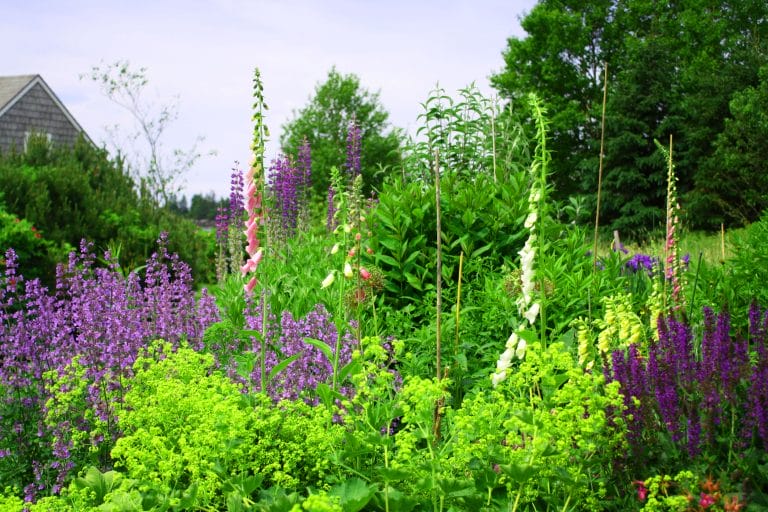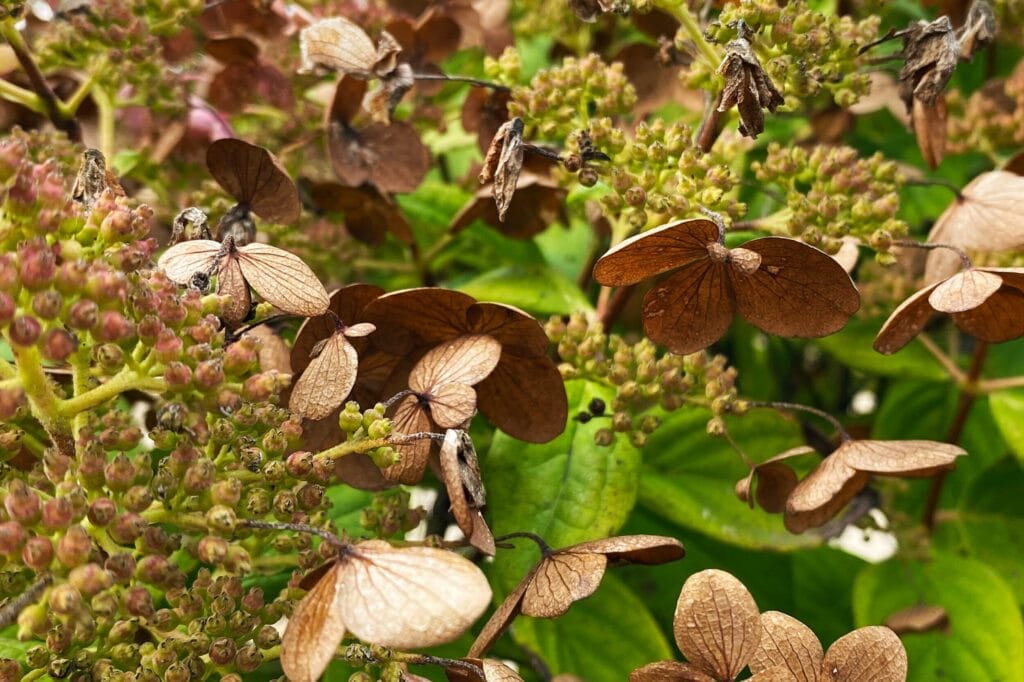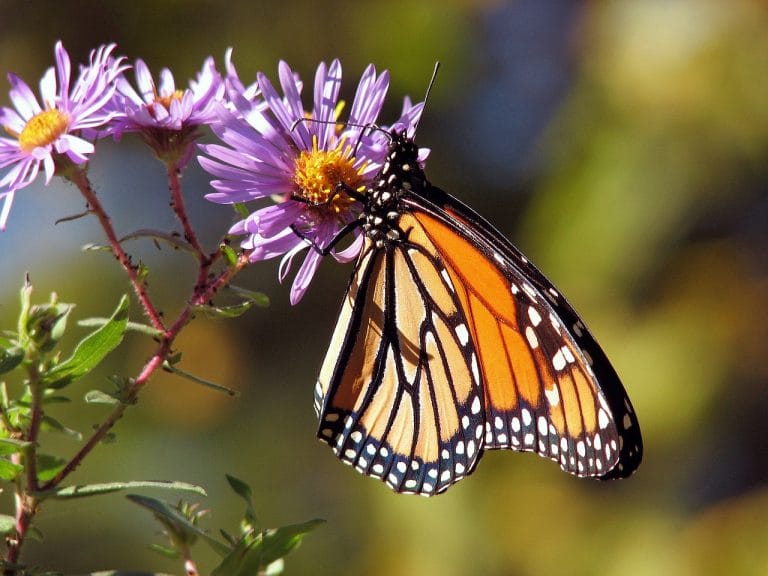
- Monday-Friday 7AM – 5PM | Saturday 7AM - 5PM | Sunday: 8AM - 4PM
Menu

Now that autumn has arrived and the end of the year is around the corner, it is now time to consider your plan for an annual fall cleanup. When it comes to perennial shrubs, pruning them back is a good idea, to give the shrubs their best bet at a healthy next year. Every plant has a preferred method of pruning, as each kind of plant has a different chemical structure and growth rate. Hydrangeas are no different, and benefit from pruning. When it comes to hydrangeas, however, different kinds of hydrangeas within the hydrangea family have different pruning recommendations.
Hydrangea paniculata, or the more commonly known “Limelight,” “Bobo,” “Fire Light,” and “Quick Fire” varieties benefit from a trim at the end of the year, during late fall. To prune these hydrangeas, simply remove dead flowers, or trim the entire plant back by 1/3rd. Focus on the cleanliness of the plant and feel free to remove spindly twigs that don’t have blooms. As described by Proven Winners, “Panicle hydrangeas bloom on new wood – in other words, they create their flower buds for the year only after they’ve begun to leaf out in spring. This means that they can be pruned without negatively impacting their bloom.” Continuing, pruning “encourages stronger stems, better blooming, and an overall more attractive shape.” Further explained, if you are working with a small plant or one just getting established, “keep pruning to minimum until it has had the chance to develop some good body.”

Hydrangea arborescens, or the more commonly known “Annabelle” and “Incrediball” varieties benefit from a light trim at the end of fall. Arborescens, also known as “Smooth Hydrangea” are characteristically generally pretty floppy in growth, and grow big blooms that bend from their weight. For these hydrangea, either prune back dead flower blooms, or cut back to the ground. If you prefer the flopped-over structure of a fully grown smooth hydrangea, then prune back closer to the ground. If you want to encourage sturdier growth, then only trim back slightly, cutting back dead flowers in autumn.
For Hydrangea macrophylla, or the more commonly known “Endless Summer” and “Bloomstruck” varieties, you will need to wait until the spring to prune. Do not prune these hydrangeas in the fall, as these hydrangeas bloom from old wood growth, unlike paniculata or arborescens, which bloom from new growth. By pruning in the fall, you’ll cut off old wood growth, and won’t have any blooms the next year. To prune Hydrangea macrophylla, or “bigleaf hydrangea,” wait until the spring and take notice of where new growth is emerging from old growth wood. Prune away any twigs that are not producing new growth, and as the season continues into summer, prune away blooms that die. By doing this, you’ll keep your hydrangeas tidy and healthy, giving them the best opportunity to grow as they should.
The end of the year is generally a great time to take stock of your garden and for fall cleanup. A fall cleanup that is mindful of each plant’s specific preferences will ensure that the investment into your landscape will holdover the winter and begin the growing season of spring ready and healthy. While all of the kinds of hydrangeas that were mentioned in this article are all hydrangeas, they all have different growth rates and characteristics. These differences in characteristics define how you should care for your shrubs. Taking note of these differences will ensure the vibrancy of your blooms and that your landscape thrives.
Whispering Hills Garden and Landscape Center is a full service landscape center and nursery located in Cary, Illinois. Stop in today for our full selection of hydrangeas and perennial shrubs, now 50% off until end of season (Updated: 10/15/21).
Shop Archive

In an era where sustainability is more than a buzzword, Whispering Hills Garden Center

June is National Pollinator Month, a perfect time to celebrate the essential role pollinators

As the weather warms up, spending time outdoors becomes more appealing. However, with the
**IMPORTANT** Non e-commerce prices listed on various pages of this site, may not reflect the most up-to-date prices. Call to verify prices before coming in.